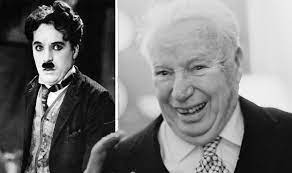
Image Courtesy : Daily Express
Charlie Chaplin, born in London in 1889, had a remarkable early career that laid the foundation for his enduring legacy in the film industry. From his humble beginnings in the theater to his groundbreaking work in Hollywood.
Chaplin’s innovative approach to physical comedy and his commitment to subtlety and improvisation set him apart as a true master of his craft. In 1907, Chaplin first visited America with a theater company, where he gained early recognition for his role as “Billy” in the play “Sherlock Holmes”. This led to two tours across the country, during which he honed his comedic skills and captivated audiences with his unique style. It was on his second tour that he met Mack Sennett, a prominent figure in the film industry, who recognized Chaplin’s talent and signed him to Keystone Studios.
In 1914, Chaplin made his first one-reeler film titled “Making a Living”. This marked the beginning of a prolific period in his career, during which he created thirty-four more short films, including memorable titles such as “Caught in a Cabaret”, “Caught in the Rain”, “The Face on the Bar-Room Floor”, and “His Trysting Place”. These early silent shorts primarily focused on physical comedy, showcasing Chaplin’s slapstick acrobatics that made him famous.
However, it was the subtleties of his acting that truly set him apart and made him a great performer. While other comedic actors of the time, such as Harold Lloyd and Buster Keaton, relied on daredevil stunts and surreal situations, Chaplin took a different approach. He believed that the best way to find humor or evoke pathos in a scene was to create a natural environment and allow the comedy to emerge organically. This emphasis on improvisation and subtlety became a hallmark of Chaplin’s work and showcased his exceptional talent as an actor.
In Hollywood, Chaplin was known for his demanding nature. Regardless of the size of the role, he would personally guide each actor through every scene, recognizing that the success of a scene relied on the collective efforts of the entire cast. This level of control allowed him to express the subtlety of character that was so important to him. While his meticulous attention to detail often resulted in films running over-time and over-budget, the public’s positive reaction affirmed the effectiveness of his methods.
As Chaplin’s popularity grew, he took more creative liberties with his filmmaking. In his 1925 hit “The Gold Rush”, he continuously reworked scenes and rebuilt sets, often improvising the story in front of the camera with only a basic script framework. This unorthodox approach resulted in lively and spontaneous footage, but it also meant shooting and printing hundreds of takes.
Chaplin’s dedication to experimentation and his willingness to start over if necessary pushed the boundaries of filmmaking and showcased his commitment to his craft. Although Chaplin’s films belong to the silent movie era, his achievements continue to resonate in modern cinema. As the industry transitioned to feature-length talkies, the need for more nuanced acting became apparent.
Chaplin had already demanded this depth long before anyone else, setting the stage for a new era of more sophisticated cinema. His rigorous approach to acting and directing paved the way for future filmmakers and actors to explore the subtleties of storytelling on screen.
In conclusion, Charlie Chaplin’s early career and legacy are a testament to his unparalleled talent and innovation in the film industry. From his beginnings in the theater to his groundbreaking work in Hollywood, Chaplin’s commitment to physical comedy, improvisation, and subtlety set him apart as a true master of his craft. His influence can still be seen in films today, as his dedication to pushing the boundaries of storytelling continues to inspire future generations of filmmakers.
